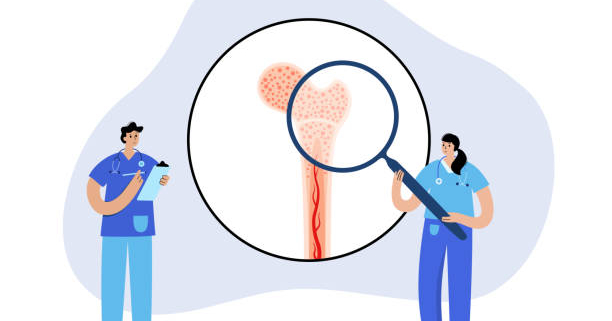Bone marrow, the spongy tissue nestled within our bones, plays a vital role in our survival. It acts as a factory, churning out the essential components of our blood: red blood cells that carry oxygen, white blood cells that fight infection, and platelets that help blood clot.
This blog delves into the world of bone marrow transplants (BMT), a potentially life-saving procedure that offers a cure for certain conditions, including sickle cell disease.
Understanding Bone Marrow
There are two main types of bone marrow: red and yellow. Red bone marrow is the hero of this story. It houses stem cells, the body’s master cells with the remarkable ability to transform into various mature blood cell types. These stem cells constantly multiply and mature, ensuring a steady supply of fresh blood cells circulating throughout our body.
When the Factory Fails: Bone Marrow Disorders and Testing
Several conditions can disrupt the normal functioning of bone marrow, leading to imbalances in blood cell production. These imbalances can manifest as anemia (low red blood cells), low white blood cell counts (increasing infection risk), or high platelet counts (which can lead to clotting problems).
In such cases, a bone marrow test might be necessary. This minimally invasive procedure involves extracting a small sample of bone marrow fluid and tissue, usually from the hip bone. The sample is then analyzed to pinpoint the underlying cause of the blood cell abnormalities.
Bone Marrow Transplants: Replacing the Diseased Factory
A bone marrow transplant (BMT), also known as a stem cell transplant (SCT), offers a glimmer of hope for patients with certain blood and bone marrow disorders. The procedure essentially replaces the patient’s diseased bone marrow with healthy stem cells from a donor.
These healthy donor stem cells are infused into the patient’s bloodstream, where they migrate to the bone marrow and begin to grow and mature. Over time, they take over the production of healthy blood cells, effectively replacing the diseased bone marrow function.
Who Needs a BMT?
While BMT holds immense promise, it’s not a one-size-fits-all solution. This procedure is commonly recommended for patients who have:
- Sickle Cell Disease: A genetic disorder causing red blood cells to become sickle-shaped, leading to severe pain, organ damage, and stroke. BMT is currently the only curative option for sickle cell disease.
- Thalassemia Major: Another genetic blood disorder characterized by abnormal hemoglobin production, leading to severe anemia. BMT offers a potential cure.
- Aplastic Anemia: A rare condition where the bone marrow fails to produce enough blood cells. BMT is a potentially life-saving treatment.
- Inherited Immune Deficiency Disorders: These genetic disorders weaken the body’s immune system, making individuals susceptible to infections. BMT can help rebuild a functional immune system.
- Inherited Metabolic Disorders: Certain genetic disorders disrupt the body’s ability to process specific substances. BMT can potentially correct these metabolic imbalances.
- Leukemia: Cancers of the blood and bone marrow. BMT can be used to eradicate cancerous cells and restore healthy blood cell production.
- Relapsed Lymphoma: A type of cancer of the lymphatic system that returns after initial treatment. BMT can be used to attempt a cure for relapsed lymphoma.
- Myelodysplastic Syndromes (MDS): A group of disorders affecting the development of blood cells in the bone marrow. BMT can be a treatment option for some types of MDS.
Finding the Perfect Match: The Search for Donors
The success of a BMT hinges on finding a compatible donor whose stem cells closely match the recipient’s tissue type (HLA type). This minimizes the risk of the body rejecting the transplanted stem cells, a serious complication known as graft-versus-host disease (GVHD).
There are three main types of BMT depending on the donor source:
- Autologous BMT: In this approach, the patient’s stem cells are collected, treated (if necessary), and then reintroduced after high-dose chemotherapy or radiation to eliminate diseased bone marrow. This type of BMT is less common.
- Allogeneic BMT: This is the most common type, where stem cells come from a matched donor, ideally a sibling with a 100% HLA match. Other family members or unrelated donors registered in national bone marrow registries can also be potential sources.
- Haploidentical BMT: This approach uses stem cells from a partially matched donor, such as a parent. It’s a less common option due to a higher risk of GVHD.
The BMT Journey: Challenges and Recovery
The prospect of a BMT offers immense hope, but it’s a complex journey with significant challenges. Here’s a preview of what you can anticipate:
Pre-Transplant Conditioning: Before the transplant, the patient undergoes intensive conditioning treatment, typically involving high-dose chemotherapy and/or radiation therapy. This treatment aims to eradicate any remaining diseased cells in the bone marrow and suppress the immune system to prevent rejection of the donor stem cells. However, conditioning can be harsh, causing side effects like nausea, vomiting, hair loss, fatigue, and an increased risk of infection.
Post-Transplant Complications: Following the transplant, the patient remains hospitalized for several weeks while the new stem cells engraft (take root) in the bone marrow and begin producing healthy blood cells. This period is critical but can be challenging due to:
- Engraftment Syndrome: The body may react to the new stem cells, causing fever, rash, and nausea.
- Graft-versus-host disease (GVHD): A serious complication where the donor’s immune system attacks the recipient’s body. There are two types: acute GVHD (occurring within the first 100 days) and chronic GVHD (developing later).
- Infections: Due to the suppressed immune system, patients are highly susceptible to infections requiring careful monitoring and isolation procedures.
The Road to Recovery: Recovery after BMT is a gradual process that can take months or even a year. Regular doctor visits, blood tests, and medications are crucial to monitor progress, prevent complications, and manage side effects.
Psychological Impact: The BMT journey can be emotionally draining for both the patient and their loved ones. The intensity of the treatment, the uncertainty of outcomes, and the long recovery period can take a toll on mental well-being. Support groups, counseling, and open communication with the healthcare team can help patients navigate these challenges.
The Power of Bone Marrow Donation: Be a Beacon of Hope
Bone marrow donation is a selfless act with the potential to save a life. If you’re considering becoming a bone marrow donor, please register with your national bone marrow registry. You could be the answer someone is desperately waiting for.






